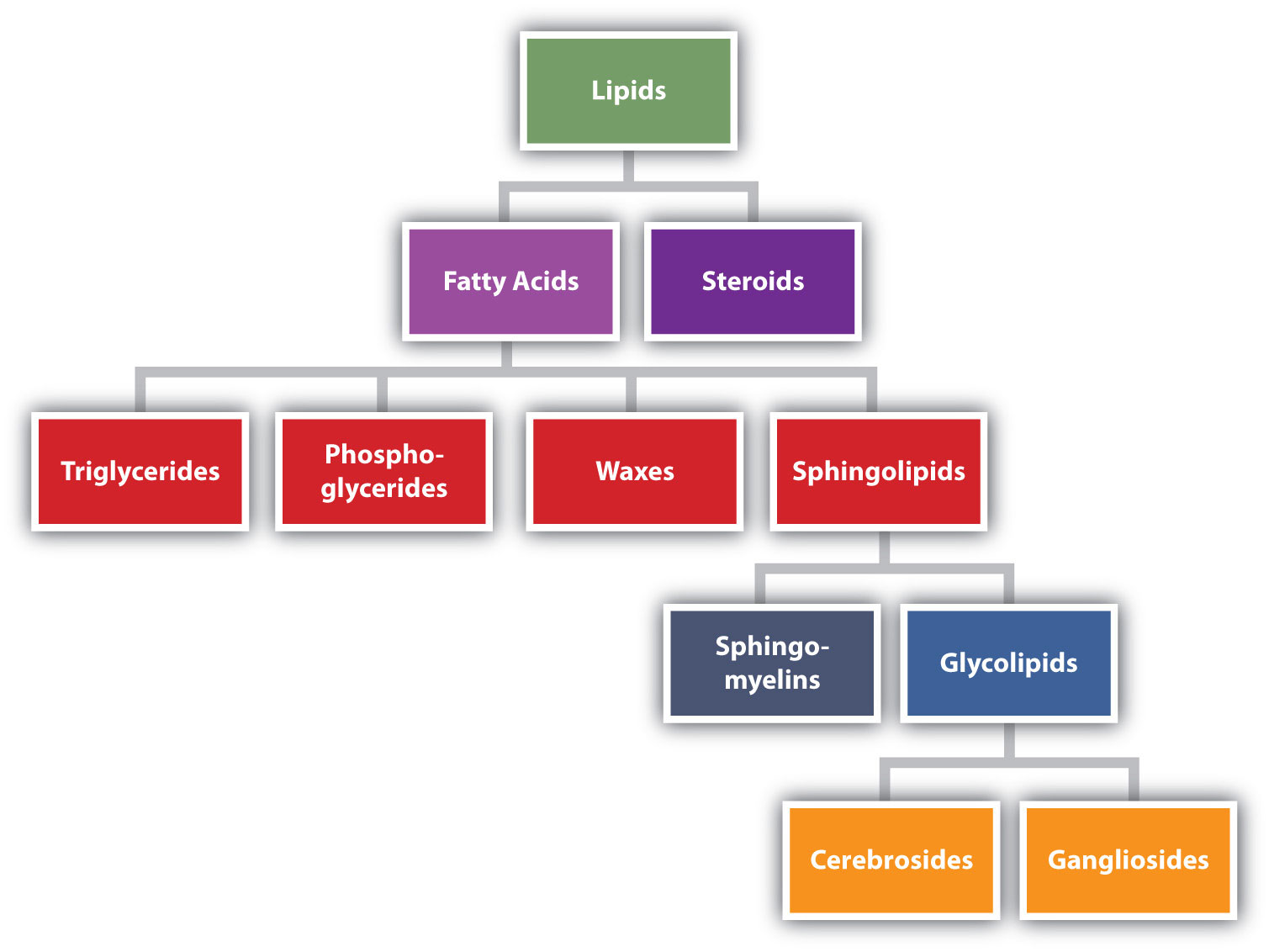
Biological lipids originate entirely or in part from two distinct types of biochemical subunits or "building-blocks": ketoacyl and isoprene groups. Lipids may be broadly defined as hydrophobic or amphiphilic small molecules the amphiphilic nature of some lipids allows them to form structures such as vesicles, multilamellar/ unilamellar liposomes, or membranes in an aqueous environment. Lipids have applications in the cosmetic and food industries, and in nanotechnology. The functions of lipids include storing energy, signaling, and acting as structural components of cell membranes. Lipids are a broad group of naturally-occurring molecules which includes fats, waxes, sterols, fat-soluble vitamins (such as vitamins A, D, E and K), monoglycerides, diglycerides, phospholipids, and others. At the bottom is the common phospholipid phosphatidylcholine.


: 328 The middle structure is a triglyceride composed of oleoyl, stearoyl, and palmitoyl chains attached to a glycerol backbone.

At the top are cholesterol and oleic acid.


 0 kommentar(er)
0 kommentar(er)
